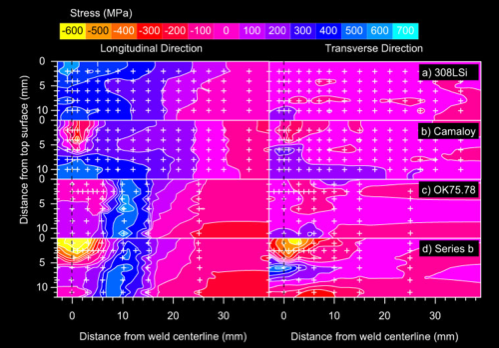

Residual stresses that arise as a result of welding can cause distortion, and also have significant implications for structural integrity. Martensitic filler metals with low transformation temperatures can efficiently reduce the residual stresses generated during welding, because the strains associated with the transformation compensate for thermal contraction strains during cooling. However, it is vital that a low weld transformation temperature is not obtained at the expense of other important material properties. This article outlines the alloy design process used to develop appropriate low transformation temperature filler materials for the mitigation of residual stresses in both low alloy ferritic and austenitic stainless steel welds. Residual stresses in single pass, 6 mm bead in groove welds, on 12 mm thick plates, have been measured and compared against those obtained with commercially available conventional austenitic and ferritic filler materials. The filler metals developed here exceeded requirements in terms of weld mechanical properties, while significantly reducing the maximum residual stress in the weld and heat affected zone.
Science and Technology of Welding and Joining, 16 (2011) 279-284

| Envelope | Coefficients | Davenport | Hot | Delta |
| Satoh | Fields | Piping | European welds | Poles |
| Mixed | Creep | Extraordinary ductility | Problems | Low temperatures |
| PT Group Home | Materials Algorithms |